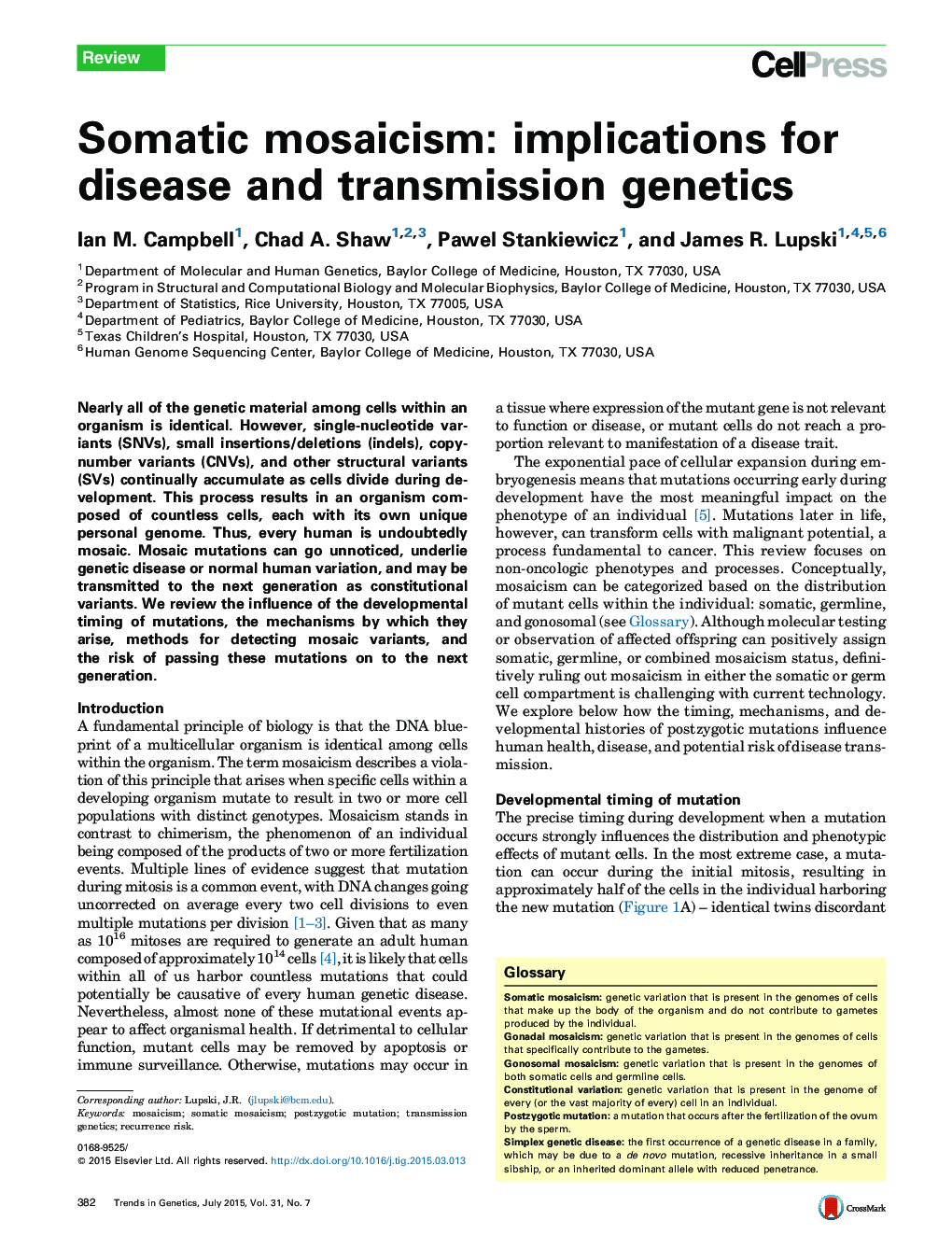| Article ID | Journal | Published Year | Pages | File Type |
|---|---|---|---|---|
| 2824706 | Trends in Genetics | 2015 | 11 Pages |
•Postzygotic mutation is a common occurrence.•The developmental stage and timing of new mutations influence their phenotypic effects and likelihood of transmission.•All major classes of mutations are observed in the mosaic state.•Mathematical modeling of mosaicism can inform estimates of recurrence risk for new mutations.
Nearly all of the genetic material among cells within an organism is identical. However, single-nucleotide variants (SNVs), small insertions/deletions (indels), copy-number variants (CNVs), and other structural variants (SVs) continually accumulate as cells divide during development. This process results in an organism composed of countless cells, each with its own unique personal genome. Thus, every human is undoubtedly mosaic. Mosaic mutations can go unnoticed, underlie genetic disease or normal human variation, and may be transmitted to the next generation as constitutional variants. We review the influence of the developmental timing of mutations, the mechanisms by which they arise, methods for detecting mosaic variants, and the risk of passing these mutations on to the next generation.
